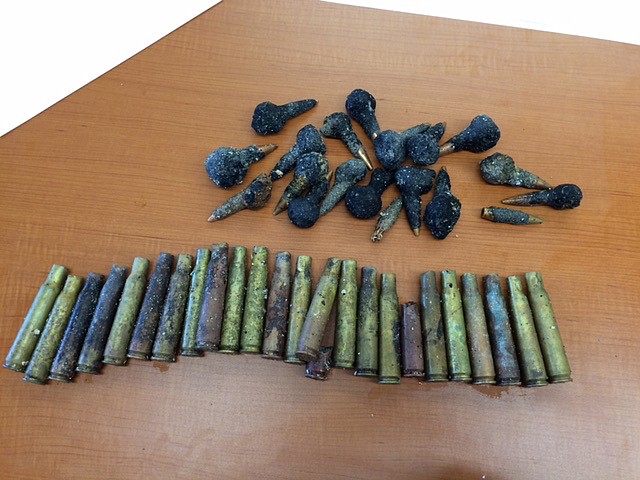- April 25, 2024
-
-
Loading

Loading

During World War II, before the crowds and the condos, Sarasota’s vacant and isolated barrier islands were a perfect spot for aerial target practice.
In the 1940s, pilots from Sarasota, Venice and Tampa used the Army Air Corps firing range on Longboat Key to train pilots preparing to join American forces in Europe. Sarasota County is occasionally reminded of its military past in the form of empty shell cases and bullets.
Spent munitions were found in Venice, for example, during a 2015 project. They’ve also been known to wash up on Longboat Key, but they have never been found near Siesta Key — until now.
But this period is now more than just a historical curiosity, because Sarasota County is facing an additional $1 million expense to sort the munitions on a $21.5 million beach project.
By all accounts, the Air Force limited training activities to Longboat, which is why county officials were surprised to learn spent munitions had been found during the second phase of the South Siesta beach renourishment project.
The project involved dredging sand from three sand collection sites to renourish 2 miles of south Siesta Key shoreline. Approximately $1.5 million was allocated for construction and design costs. The remaining $18.1 million was awarded to Weeks Marine Inc., which began dredging March 9.
However, just three days in to the effort, Project Manager Paul Semenec was notified that empty shell casings had been found at one of the collection sites.
According to Sarasota County Digital Preservationist Larry Kelleher, it’s possible tides carried the munitions from the north or the south.
“Longboat and Venice were firing ranges, so it’s no surprise munitions were found there,” Kelleher said.
After the munitions were found at the first site, crews were instructed to move to the second, but shell casings were found there, as well. When the munitions were found, again, at the third location, protective screens were installed on the two dredging boats.
Semenec said the two boats were outfitted with the screens in alternating shifts, resulting in no losses in productivity. Semenec said aside from the addition of the screens, the project went smoothly and finished on schedule May 23.
However, Weeks Marine Inc. submitted a $1.9 million claim to the county on April 12. The claim was in addition to its $18.1 million contract. It cited a 19.1% loss of productivity caused by the addition of the screens. The company claimed the screens decreased the amount of sand that crews were able to move at a time.
County officials denied the initial claim of $1.9 million. After subsequent discussions with county staff, Weeks Marine Inc. reached an agreement of $1 million related to the loss of productivity.
County commissioners have yet to approve the additional payment, which would be funded using $330,000 left over from the South Siesta beach restoration budget and $668,000 from Tourist Development Tax capital improvement project funds. The board is set to discuss the issue during an Aug. 23 meeting.
Although there’s still no documentation of military activity on Siesta Key, this incident will likely shape the planning for future shoreline-related efforts.
“I anticipate with the next project, we will identify the possibility of munitions,” Semenec said. “So that can be addressed by potential bidders, rather than having to do it at the end of the process.”